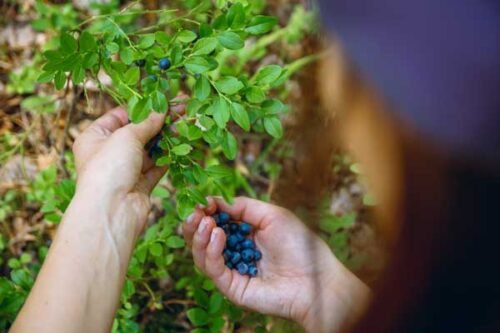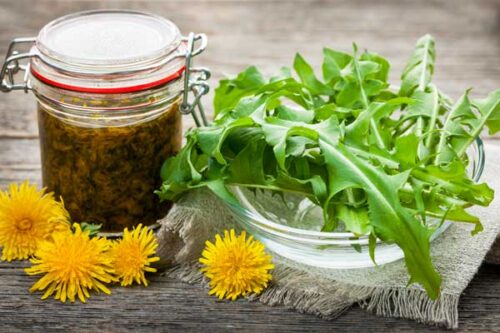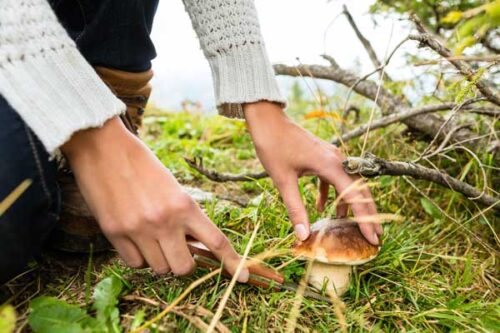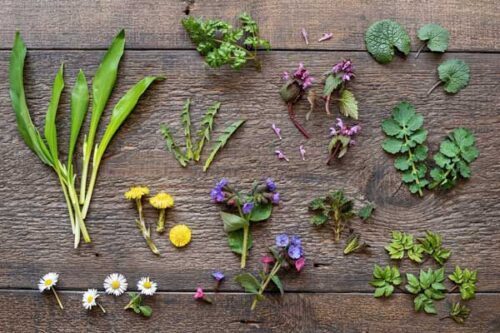Foraging
Here is a basic page layout with no sidebarWhat is foraging?
For most of human history, man has hunted and gathered, or foraged. Foraging is simply going out into the woods, fields or wild to find food, including herbs, plants, fruit, nuts, mushrooms and even shellfish. There are over 120,000 edible plants around the world – of all those edible plants, about 30 are commonly used. Foraging adds diversity to one’s diet.
The benefits of foraging include:
- Saves money
- Contributes to food security
- Adds micronutrients and nutrients to one’s diet
- Connects one with nature and the natural world
- Supports cultures and regional identities
Anyone who’s gone into the woods to pick blackberries or blueberries has been foraging – though it’s not always so simple. There are poisonous plants to watch out for, and one must know the area where the food is being harvested.

Ripe fresh blueberries in the forest.

Ripe fresh blueberries in the forest.
The “Picture This” free app can help you identify over one million plants from around the world, though novice foragers must be extremely careful and should take courses and consult with experts – wild carrot can look similar to hemlock, and both can be found in a backyard. One will nourish you; the other can kill you.
Also avoid any areas where weed killer has been sprayed – like the edges of freeways, telephone poles, train tracks and lawns that might have been treated. Also steer clear of any dog-friendly outdoor spaces.
Urban Foraging
Urban foraging is simply finding edible plants in urban areas; the most common food found are fruit from trees around a city and edible plants found in parks. The practice is frowned upon in some cities and runs a risk because so much urban land is toxic and not suitable for growing edible food. Anyone interested in urban foraging should learn through a local experienced forager before going out solo.
Backyard Foraging
Yes, you can even forage in your backyard – or someone else’s backyard! What many people see as weeds, such as dandelions, others see as a tasty treat. If you plan to forage in a neighbors’ backyard, please make sure to get permission first.

Foraged edible dandelions flowers and greens with jar of dandelion preserve

Foraged edible dandelions flowers and greens with jar of dandelion preserve
Finding Wild Edibles
Interested to know what wild edibles might be in your area? Check out the Falling Fruit map, a collaborative map from foragers, freegans and foresters that lists over a half million food sources from around the world.
If you’re interested in foraging, please make sure to research and talk with some foraging experts. Ideally, you’ll take some courses first. There are poisonous plants as well as areas where the ground is too toxic to eat the food from, so you do need to know what you’re doing before you start foraging. This video shows you how easy it could be to choose the wrong plant and end up eating something poisonous like hemlock.

Searching for porcini mushrooms

Searching for porcini mushrooms
In addition, there are laws and foraging etiquette to take into account. For example, on federally-owned Bureau of Land Management land, you can pick flowers, berries or mushrooms in small amounts as long as they are not a protected species and you are not going to sell them. But in national parks, there are confusing regulations so you must call the park to find out if foraging is allowed, and, if so, what can be foraged. You even need to make sure your municipality allows foraging on city property like in parks or even ravines.
One Country Doing It Right
From May to September, Sweden turns the entire country into a forager’s dream with their enviable program called Edible Country. The government hired Michelin-starred chefs to create recipes using ingredients found on the land and in the woods around 13 picnic tables scattered throughout the countryside.
Diners simply book a table, show up, and forage for their own food. A guide and/or chef can be hired to help with finding and preparing the food. This is all made easier because Sweden has a Right of Public Access Law, where the public can freely roam through public and private spaces as long as nothing is disturbed or destroyed.
(Please note: as of June 2020, there were restrictions in Sweden because of the coronavirus so please check if you are thinking of booking.)

Wild garlic, lungwort, nettle, ground elder and wild edible plants

Wild garlic, lungwort, nettle, ground elder and wild edible plants
Become a Forager
If you are interested in becoming a forager, make sure you join a local group and find an expert forager to learn from. And always remember to never, ever overforage – you must make sure there is enough food left for others and also so the plant can continue to grow. Never take more than 10% of what is there – and only take what you will eat.
Wild Edible has more information to get you started, as well as Tyrant Farms. There are also good books on the subject that you can purchase.
Lorem Ipsum Dolor
Nunc et vestibulum velit. Suspendisse euismod eros vel urna bibendum gravida. Phasellus et metus nec dui ornare molestie. In consequat urna sed tincidunt euismod. Praesent non pharetra arcu, at tincidunt sapien. Nullam lobortis ultricies bibendum. Duis elit leo, porta vel nisl in, ullamcorper scelerisque velit. Fusce volutpat purus dolor, vel pulvinar dui porttitor sed. Phasellus ac odio eu quam varius elementum sit amet euismod justo.
Lorem Ipsum Dolor
Nunc et vestibulum velit. Suspendisse euismod eros vel urna bibendum gravida. Phasellus et metus nec dui ornare molestie. In consequat urna sed tincidunt euismod. Praesent non pharetra arcu, at tincidunt sapien. Nullam lobortis ultricies bibendum. Duis elit leo, porta vel nisl in, ullamcorper scelerisque velit. Fusce volutpat purus dolor, vel pulvinar dui porttitor sed. Phasellus ac odio eu quam varius elementum sit amet euismod justo.
Lorem Ipsum Dolor
Nunc et vestibulum velit. Suspendisse euismod eros vel urna bibendum gravida. Phasellus et metus nec dui ornare molestie. In consequat urna sed tincidunt euismod. Praesent non pharetra arcu, at tincidunt sapien. Nullam lobortis ultricies bibendum. Duis elit leo, porta vel nisl in, ullamcorper scelerisque velit. Fusce volutpat purus dolor, vel pulvinar dui porttitor sed. Phasellus ac odio eu quam varius elementum sit amet euismod justo.
Lorem Ipsum Dolor
Nunc et vestibulum velit. Suspendisse euismod eros vel urna bibendum gravida. Phasellus et metus nec dui ornare molestie. In consequat urna sed tincidunt euismod. Praesent non pharetra arcu, at tincidunt sapien. Nullam lobortis ultricies bibendum. Duis elit leo, porta vel nisl in, ullamcorper scelerisque velit. Fusce volutpat purus dolor, vel pulvinar dui porttitor sed. Phasellus ac odio eu quam varius elementum sit amet euismod justo.
Lorem Ipsum Dolor
Nunc et vestibulum velit. Suspendisse euismod eros vel urna bibendum gravida. Phasellus et metus nec dui ornare molestie. In consequat urna sed tincidunt euismod. Praesent non pharetra arcu, at tincidunt sapien. Nullam lobortis ultricies bibendum. Duis elit leo, porta vel nisl in, ullamcorper scelerisque velit. Fusce volutpat purus dolor, vel pulvinar dui porttitor sed. Phasellus ac odio eu quam varius elementum sit amet euismod justo.
